– 3 July, 2016
Although it can be awkward watching dealers play curator at times - the pervasive presence of capital strongly shaping the materialisation of any art fair - this year furnished a number of excellent presentations. The best of which both consciously embraced, and attempted to transcend, the commercial imperatives of their situation: delivering tight, enigmatic and well considered shows with playful and sophisticated exhibition design.
Downtown Auckland
Forty dealer booths representing galleries from New Zealand, Australia, the Cook Islands, and Chile
Auckland Art Fair 2016
26 May - 29 May 2016
The commercial framing of art as a commodity at a domestic scale can be an uncomfortable reality check for those invested in its loftier ideals. Yet with art, as you’d expect, there’s always more to it. Anthony Byrt put it well:
It’s easy to assume art fairs are the dirty end of the art business: the events where all our ideals about beauty and aesthetics and the noble pursuit of social change via our creativity runs into the coldest and hardest of facts: that art and money have gone hand-in-hand since forever.
The Auckland Art Fair returned - after a hiatus and a change of both owners and directors - with stall holders, stakeholders and the wider arts sector primed to appraise the rebooted Fair as a commercially viable entity, and an event capable of capturing the public imagination. From the accounts I’ve been privy to, it appears the new Co-Directors Stephanie Post and Hayley White have delivered on the former. I’m more interested in the latter, but of course the two are in many ways inseparable. Byrt goes on:
New Zealand has a remarkably healthy art market given the size of the population. But that’s still the problem - a small country makes for a small number of collectors. As a result, there have always been questions about whether a substantial art fair is really sustainable here. They’re expensive to put on, and, for the galleries who buy booths, expensive to participate in. That’s why up until now, the Auckland Art Fair has been a sputtering - albeit worthwhile - beast.
With this in mind, the weblink for Byrt’s piece - released before the Fair and encouraging people to attend - betrayed an inadvertent, and somewhat ironic, poetry: /auckland-art-fair-just-trade-show-go/
On the surface it was, perhaps, largely similar to previous iterations. Most major New Zealand gallerists returned to The Cloud, along with a few newcomers, including MUTT from Santiago and Bergman Gallery from Rarotonga. A strong contingent of Australian galleries also participated, albeit against the worrying backdrop of their recently slashed state arts funding, leaving a number of cultural organisations in uncharted territory. Not to mention the demise of the 2016 Melbourne Art Fair.
Although it can be awkward watching dealers play curator at times - the pervasive presence of capital strongly shaping the materialisation of any art fair - this year furnished a number of excellent presentations. The best of which both consciously embraced, and attempted to transcend, the commercial imperatives of their situation: delivering tight, enigmatic and well considered shows with playful and sophisticated exhibition design. The worst salon style offerings echoed and exacerbated the visual overload of the fair environment. Yet, according to one artist I spoke to, their gallerist reported the ‘more is more’ strategy had apparently produced strong sales. Go figure.
While at one end of the spectrum one gallery was (allegedly) charging artists to participate, on the other, Michael Lett‘s knowing placement of Eve Armstrong’s Trading Table in a solo presentation was a bold move. Eschewing the sales imperative entirely, Armstrong’s now practised social practice work operated as a platform for the bartered exchange of goods and services throughout the period of the Fair.
Evolving over time, and infused with Armstrong’s open, charming energy, Trading Table foregrounded the social exchange as the work itself. Lett’s was also a move that paid off, with the booth proving one of the most widely popular and directly engaging. It took out the 2016 Stand Prize sponsored by My Art, judged by Christina Barton and Gregory Burke (whose response to the Fair you can read here). According to the Fair, the stand was “awarded the prize on the basis of quality of presentation, curatorial sensibility and contribution to arts development and discourse in the Pacific region.” Trading Table proved it is the experience of art that is most valuable.
Hopkinson Mossman owned a challengingly deep booth design with a cool, measured pairing of lush, elegant felt wall hangings by Peter Robinson and a suite of assured, minimalist double-stretcher paintings by Oliver Perkins. In a fortuitous moment - although the venue felt lit for an expo event rather than an art event which simulates gallery environments - the array of overhead lights produced a play of raking light and shadow within their space which framed and echoed the works themselves.
There were strong group presentations from Melanie Roger, Peter McLeavey Gallery, Starkwhite, and Hamish McKay, among others. PAULNACHE was a hub overflowing with raw energy, high contrast and vivid colour. The ‘DEALER’ badge on Matt Nache’s lapel said it all. His team of artists ably demonstrated you can work the room and party hard at the same time. Glen Hayward‘s meticulously constructed simulations created a series of easily overlooked visual double-takes. Kow tow and Everyday people, adapted specifically for the fair, covered the walls in clusters of carved wooden nails which looked like they had been hammered in by our Prime Minister.
Sarah Scout Presents Tony Garifalakis was perfect for a fair context. Having also come looking for a little amateur social anthropology (so did Julian McKinnon), in Garifalakis I found the work to mirror and confront the surrounding social spectacle. The ‘black faced’ official portraits of bejewelled female royalty in his Bloodline series proved playfully edgy, and frankly, hilarious. Brilliant.
Across town at DEMO, a new project space under the auspices of the Whitecliffe College of Arts & Design, artist Sarah Mohawk’s hosted the Public Domain Art Fair, developed in association with DEMO’s Co-director Hikalu Clarke. Inspired in part by the Speculation publication project, and timed to coincide with the Fair proper (and ride along on its marketing), the low-budget PDAF invited current and recently closed artist-run initiatives in Auckland and Hamilton to submit work from associated artists. Established both as a grass roots alternative to, and a critique of, the moneyed Auckland Art Fair, the PDAF ended up being included in the Fair proper’s wider VIP programming (via Francis McWhannell’s tour of local ARIs) and hence endorsed by them to an extent. For the better.
In its collective form, the PDAF didn’t look fundamentally reactionary anyway; rather, it looked playfully critical. The expanded programme of events associated with the Auckland Art Fair were sprawling, and the concept and positioning of the PDAF contributed something important to the wider conversation, above and beyond any consideration of the material exhibition itself. Much like the Fair proper, the PDAF couldn’t rely on a theme-driven curatorial premise, and reflected the drives of its institutional and individual participants.
Mohawk spoke to me about Public Domain as a kind of “artists’ union”, an indeterminate “open source” network for making connections which artists might adopt for their own purposes. She also spoke to Artists Alliance about the emerging project. Here’s their manifesto and fine print, along with a sexy GIF of their series of PDAF posters.
Although there was a minor social media controversy over the PDAF designer ripping off a 2015 poster by artist/designer Matthew Galloway for Blue Oyster Art Project Space - a case of “who wore it better?” - everyone involved appeared to get over it quickly. Perhaps most interesting was the implied question: what constitutes the ‘public domain’ itself, and how are artists and designers choosing to engage with their understandings and experiences of it? Given the prevalence of remix culture - where the public domain (rightly or wrongly) is often considered synonymous with anything available on the internet - I would have owned the poster reference as a homage and the design a gesture of appropriation, rather than apologising when outed and then making minor alterations to it.
The PDAF exhibition made use of a space upstairs normally used for storage to display the work of Louisa Afoa (via NZ on TV Gallery) which offered a provisional aesthetic context. Other highlights included Hamilton-based painter Te Marunui Hotene’s raw, energetic paintings (via Casbah Gallery), Hugo Lindsay’s nasdaq and a slice of your corner (via HOTDATE), and the large sculptural centre piece by Li Ming Hu for Canape Canopy, a layer cake complete with life sized photographs of Hans Ulrich Obrist and Nigela Lawson. And while a Hallertau beer was $11 at the Fair (the cheapest drink there), at DEMO it was free (many thanks).
Back at the Fair proper, 2016 boasted a number of new initiatives everyone could celebrate. One of these was Ngatahi Editions, initiated by Te Tuhi Director Hiraani Himona, drawing on her experience participating at Frieze via the South London Gallery. The Ngatahi Editions stand presented a wide range of reasonably priced limited edition works and publications by artists showing at, or directly associated with, the major Auckland non-profit arts organisations. Donating them $10,000 worth of booth space was a meaningful (read: not merely symbolic) way of acknowledging the huge (and systemically underpaid) contribution made by non-commercial arts organisations to the delicate arts ecology, and indeed the commercial arts sector.
Ngatahi Editions was the only stand where, like a gallery shop, visitors could buy a work and walk straight out with it. Working the stand for a few hours myself (I wear a few hats), it was so unbelievably busy I saw works carried out in one hand under a little bubblewrap. In a good way. With limited edition works starting at $100, it was an inexpensive way of supporting these organisations’ need to innovate alternative revenue streams to ensure their own survival, particularly when state funding is so unstable. Not to mention supporting the vast majority of artists they often show, who have no dealer representation, self-fund their own endeavors at a recurring loss, and who receive little, if any, “taxpayer” funded support in the form of artist fees and funding grants. These are the people upon which everything else is based. They produce for free within an exploitative economic model which props up the entire unregulated art market, a fact many non-artist insiders are miraculously unaware of, or willfully blind to. Show me the money.
The art and photobook stand was also a first, co-curated by Kelvin Soh of DDMMYY and Anita Totha of Remote Photobooks. They rode the crest of Totha’s recent contribution to Photobook New Zealand 2016, and drew on Soh’s now recurring presence at prestigious international art book fairs. They also repurposed the official Paper Tiger cardboard stools as display stands (and I noticed on Tan Vargas‘ Instagram feed - who showed with MUTT - that he’d acquired a few stools and included them in a new project in Hamburg).
Another important first was the official associated projects programme, Pacific Real Time, curated by Govett Brewster Gallery Director Simon Rees and MONA Hobart’s Curator Jarrod Rawlins, with curatorial assistance from Auckland-based writer and curator Francis McWhannell. John Hurrell discusses a selection from the lineup in some detail. A more comprehensive conversation around the projects’ programme and its positioning would be valuable, and I hope others take this up, it being beyond the scope of this review.
A personal highlight of Pacific Real Time was Terror Internationale’s presentation. While several years ago, the players of the Gloria Knight set adopted (or perhaps co-opted) the language of the moneyed and mobile (the most compelling piece, a glorified smart phone charging station), the Terror Internationale collective swung the pendulum in the other direction. Capitalising on their invitation to present work in the projects programme, the collective constructed a booth simulating the other commercial galleries, and sought a crowd funding campaign to realise it.
Their booth consisted of confident, agitational, low-rent art, along with an assortment of interwoven accessories: a bookshelf and a grungy old couch which looked as if it might conceal a few empty bottles underneath. A pair of boxing gloves hung facing a pair a ballet shoes. A makeshift voodoo doll. A rug defaced with the words ‘The End’ burned in to the fabric. An empty wine bottle used as a candlestick. Their provocative and polarising installation - akin to an impoverished but uniquely social student flat - playfully engaged the politics of their situation. A wing of the booth sported a section of upturned white picket fence leaning against the wall, a less than subtle yet amusing critique of middle class aspiration. Perhaps also a nod to New Zealanders’ obsession with property as a form of financial security, and its links to the subsequent insecurity in our current housing market. A skateboard acted as a kind of countercultural centre piece, complete with disembodied shoes and a tethered purple helium filled balloon. Positioned as if about to ollie and ascend in to the air, it made me smile. Love it or hate it, I’d chalk it up as a win.
The first call for submissions to Pacific Real Time went out to the exhibitors and a selection of major public galleries (along with CIRCUIT), hence the programme can be seen not only as a reflection of the project’s curators, but also of these wider participants in some way. Its stated agenda to include projects which might not otherwise be available in this commercial setting was an important gesture. I was pleased to see works by unrepresented artists included, such as Bronwyn Holloway-Smith, Mike Heynes, and Elam student Quishile Charan. A few of the works within the programme didn’t feel comfortable in the difficult display environments they were forced to occupy (a challenge for any curator), but most managed to shine brightly enough (Holloway-Smith’s literally so). Fiona Connor‘s cheeky, low-key material philosophy was a welcome addition.
There were some thoughtful and engaging moments within Pacific Real Time, and it left me considering what else was possible if it was sufficiently funded in future. The projects programme needs to be afforded the space to develop more of the synergies which emerge from highly collectivised resources and partnerships. Of course one could ask this of any endeavour, particularly in the creative industries where funding is a constant challenge. However, we are discussing something marketed as New Zealand’s “premier” and “foremost” art event. Fairs sell sizzle and we could benefit from turning up the heat.
A lower ticket price (particularly for students, our future generations of artists), and less expensive drinks, would be in keeping with building a larger and more demographically diverse audience. The vast majority of people I spoke to complained about the price of both, from artists of modest means through to major benefactors.
While Natasha Matila-Smith got into a spot of trouble for recommending the Fair don the Art Basel moniker (in jest I imagine) - with one commentator reminding us that it is an art fair and not a festival - the discussion inadvertently begged the question: why not? Of course it’s an art fair and not a festival. But it could be both. In many ways it already is.
I am not asking for the Fair to be anything it is not. Perhaps, as one anonymous reviewer stated “the point is that its best to engage with the AAF on its own terms, as an art fair, and not as an exhibition.” Or a large number of exhibitions. While I’ve been chastised as getting “carried away” for suggesting the projects programme become multi-venue (one idea), as an artist and writer it is in fact my job to do so. There is such a wealth of creative resources and curatorial expertise in Aotearoa available to compliment the dealer driven bulk of the programme, it would be a missed opportunity not to incorporate it further. Pacific Real Time was a step in the right direction. Sure, we are not Basel or Frieze, but we can do it our way. Let’s keep talking about what comes next.
The strategic drive for greater inclusivity and consolidation evident in this year’s Fair was clearly successful, widely celebrated, and offers an encouraging sign for future iterations. Having a good hold on the basics, it also offers a platform for the Fair to ramp up its ambitions for the future.
To conclude, a recent video directed by Oscar Boyson for Artsy, examining the rise of the art fair may be of interest.
Along with a video produced by the Fair to thank all those who participated and visited.
Emil McAvoy
This is the last of three EyeContact articles on the 2016 Auckland Art Fair.
Recent Comments
Roger Boyce
" - macho and blustery on it a la Mr Boyce - " I hesitate to respond to an obvious ...
Emil McAvoy
There's also this conversation on Artbank: http://95bfm.com/bcasts/artbank-may-29-2016/
Emil McAvoy
Thank you all for your thoughts. Also, though I didn’t engage the anonymous Spinoff article at length (due to spatial ...
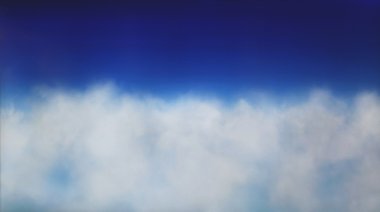
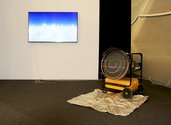



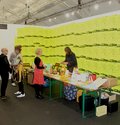

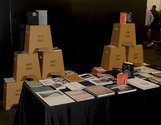

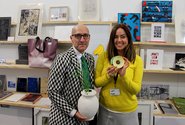

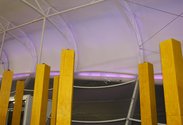

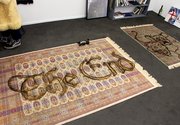
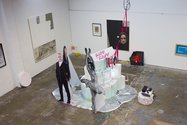

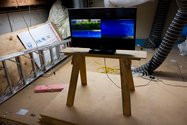
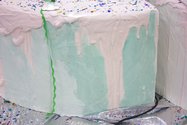
 Advertising in this column
Advertising in this column Two Rooms presents a program of residencies and projects
Two Rooms presents a program of residencies and projects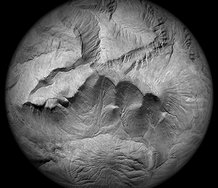
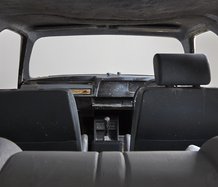
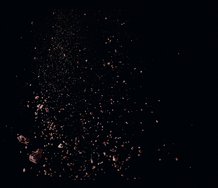
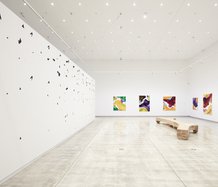
This Discussion has 14 comments.
Comment
Roger Boyce, 1:24 p.m. 4 July, 2016 #
"The commercial framing of art as a commodity at a domestic scale can be an uncomfortable reality check for those invested in its loftier ideals."
Coming from 'trash', as I do, I'm invested in the quite comfortable and lofty ideal of making my nut for reasonably heated living/working space, food and materials.
Institutional spaces (i.e. publicly funded exhibition spaces, furnished (gratis) with non-commodified objects and anti-objects) rely on what are essentially free-content-providers (i.e.independent artists). The only folks getting paid at non-commercial exhibition spaces are salaried employees - directors, curators, assistant curators, preparators, et al.
They may not be paid fabulously ... but they are paid.
In rare cases "art and money have gone hand-in-hand since forever" when that rare confluence happens one may sustain a creative practice and the faint promise of indelibility. Otherwise we (artists) starve and pass from collective memory.
Chuck Close once supposedly said an artist being taken on a tour of an art fair was “like giving a cow a guided tour of an abattoir." I like the raw fact of that observation and would rather send an alternate (my work) than attend myself.
Sarah Mohawk, 7:32 p.m. 7 July, 2016 #
Small correction - the artist who made the central cake sculpture and figures in the Public Domain Art Fair is Li-Ming Hu. She has a show on at Glovebox until the 16th July with a lot of performances, talks, and workshops throughout.
Cheers for the mention Emil. Was a pretty tough undertaking but we made it thanks to all the artists and spaces involved. As someone new to curating I did err on the side of caution with the whole design thing as there was a lot of spaces, artists, sponsors, et al. Definitely see where you're coming from and in hindsight (20/20) I might tend to agree!
Sarah Mohawk, 7:38 p.m. 7 July, 2016 #
Apologies Roger - this was intended as a main comment. I must have clicked on yours by mistake.
Agree with you - at this stage I'm happy to work in an unrelated field to sustain my practice, however I don't fault others from moving into salaried work eg. arts administration and lecturing.
Ralph Paine, 4:55 p.m. 6 July, 2016 #
Let’s clarify. . . .
First, it’s not the artist who sends his or her work to an art fair but rather the artist’s agent, dealer, gallerist. Hence: artists are not able to choose freely between having work for sale/exchange at art fairs or not. The agents, dealers, gallerists make that choice. However, artists are able to get together in groups and collectively send work for sale/exchange to art fairs, given, that is, a desire by art fair administrators/owners for artist groups to do so. Question: has a singular artist ever rented space and displayed their work for sale/exchange at an art fair?
Second, a head of cattle sent to an abattoir is not comparable to an artwork sent to an art fair. A head of cattle is an ordinary, run-of-the-mill type commodity intended for an ordinary, run-of-the-mill type market (mass production/consumption). An artwork, on the other hand, is a hypercommodity intended for a supercharged, enrichment type market (unique object production/consumption). Whereas the (to be realised at purchase) price/value of a head of cattle is not that difficult to take account of, the (to be realised at purchase) price/value of an artwork is extremely difficult to take account of. Unlike with the head of cattle, how an artwork accrues its (potentially) substantial price/value is to a large extent based on the unique and somewhat mysterious x-factors of connoisseurship, collecting, and heritage. In fact, given today’s conditions it seems that until an artwork is sent to a market and then purchased by a collector it remains simply an artefact among other artefacts, that is, simply a potential artwork. This later scenario is in line with the current market determination of everything and of all value.
Sarah Mohawk, 7:16 p.m. 7 July, 2016 #
Hi Ralph! From an artist's perspective, we love the idea of getting a hold of a rented space within an art fair. I read the Art Fair prospectus when I was researching for the Public Domain show and it costs $8,000 for a booth, plus states that favour will be given to galleries that show a singular artist, or at the very least, as few as possible. Given that high price tag (just for the space, let alone trying to recoup the cost of materials, transport, or labour) it would be a very difficult cost to justify. I can't speak for all artists but at least for my generation (eg. the participants of Public Domain Art Fair and Terror Internationale) we'd be lucky to have $8,000 in savings. Therefore it's a lot more viable to go down alternative avenues.
Art as only a potential artwork without dealership speaks to the idea that the buyer and dealer determines the art as valued. However... that's assuming that buyers are connoisseurs in the first place, and not just interested in what's on offer, because that's what the dealers (as cultural stewards via money) have to offer, and often what already has a track record of popularity.
Agree with your comment about public art institutions' connectivity with the market, however, isn't saying that payment is received via relative degrees of cultural capital a similarly business as usual point of view? Sadly I haven't found a way to eat my cultural capital just yet, but maybe I haven't accrued enough so far. Artist fees really depend on the location what you're going to get, but counting studio fees, storage fees and materials they aren't going to come out that well. But either way, that speaks to the idea that any artistic contribution is relating to the ultimate end point of selling works to high end consumers - which is financially a benefit but not necessarily what we're all after. Artists with dealers in NZ showing at public institutions is a whole other issue.
I think one of the main polemical issues with this event, is that it does make claims about being "New Zealand's premier international showcase for contemporary art". So for me it goes into the wider issues around the way that art is canonized.
Appreciate your lengthy comments.
Sarah Mohawk
Ralph Paine, 4:02 p.m. 8 July, 2016 #
Thanks Sarah. . . . Wasn’t in any way my intention to advocate a business-as-usual approach. What I advocate is a cool-headed approach. Instead of getting all macho and blustery on it a la Mr Boyce, let’s take the time and attempt to describe and analyse exactly what today business-as-usual is, and how it might be trending? The time of the art fair seems a good time for this. There’s been talk here and elsewhere to the effect that art and money are always-already inseparable. Well, is that really the case? And if it is the case, what differing historical money-forms and modes of production/exchange has art operated with and within? And perhaps more importantly, what new money-forms and modes of production/exchange might be possible in days to come? How might art and artists help in the creation of such forms and modes?
Meanwhile, when I stated that “given today’s conditions it seems that until an artwork is sent to a market and then purchased by a collector it remains simply an artefact among other artefacts, that is, simply a potential artwork” what I meant to indicate was the direction in which the determination of artworks as such is trending. We can posit many changing and mixed together ideas about how artworks have been classified as such, and thus about how an artwork’s value/price might have been determined at any given time and place. For example, once upon a time artworks were deemed artworks because of some factor-x (beauty, sublimity, symmetry, harmony, etc.) inherent to the artefact itself. Then there’s the idea that the viewer’s frame of mind determines the presence/absence of said factors-x. Next, there's the idea that no factor-x is required and thus anything can be art, in which case it’s an institutional context which determines the artwork as such. Today it seems more and more the case that the marketplace is determining artworks as such. This is not to say that the other determining ideas are not (to varying degrees) in attendance and taken account of. And coinciding with all these varying ideas and mixed determinations, doubtless the subjectivity of the artist changes: today, who does the artist think she is?
I agree that both dealers and collectors have an “interest” in the new artworks they are selling/purchasing. But “interest” suggests only the practical, calculative dimension. Connoisseurship, on the other hand, involves the way more mysterious dimension of taste and discernment, and for dealers there’s a required empathy with collectors, a knowledge of the psychology of collecting. With dealer commission often running at 50%, it’s game on today as to who brings the most value to the (successful) display and sale of new artworks, artist or dealer? But yeah, track records (cultural capital)are important. And as you say, cultural capital can be a slow train coming.
Ralph Paine, 4:26 p.m. 8 July, 2016 #
And I forgot to add: there's a wonderful line in Walter Benjamin's essay about unpacking his library which goes something like this: "The best way of collecting books is to write them yourself." Perhaps the best way of collecting artworks is to make them yourself.
John Hurrell, 4:55 p.m. 8 July, 2016 #
The best way, Ralph? Sounds a little over hermetic, doesn't it? A tad solipsistic?
Ralph Paine, 8:02 p.m. 8 July, 2016 #
Just a little thought experiment John. . . . Make of if what you will.
Here's another: in the last brief section of Giorgio Agamben's essay "Genius" he writes of a wonderful and I think crucial possible departure from the condition of productive artistic genius. Agamben: “It is the final late period of life when the old artist breaks her paintbrushes in half and contemplates.” “What does this mean?” Agamben asks. It means that “the gestures, for the first time are entirely our own, they are completely demystified of any incantation.” And a little further on: “Only the leave-taking is true, only now begins the long process of unlearning oneself.”
Roger Boyce, 7:25 p.m. 16 July, 2016 #
" - macho and blustery on it a la Mr Boyce - "
I hesitate to respond to an obvious provocation....particularly from such a garden variety pedant. But how is it anyone could get "macho and blustery" from my relatively tepid (OP) paragraphs is beyond comprehension.
Pray don't bother responding to my rhetorial musings, Mr. Pain, as I'm sorry, already, that I've chosen to break longstanding radio silence, on EyeContact's comment threads.
Now, "scuse me while I disappear." Hopefully for good.
Ralph Paine, 4:58 p.m. 6 July, 2016 #
To continue. . . .
Third, today publicly funded art institutions of all kinds are fully connected to art markets. Doubtless this is the case because many publicly funded art institutions collect artworks and/or house private collections of artworks, but another extremely important factor is the presentation by said institutions of artist projects, curated exhibitions, and so on. In other words, the salaried staff and contracted consultants of said institutions provide some of the added value (narrative, genealogy, actual and potential heritage status, etc.) required for artists to become, and remain capable of, sending (via agents, dealers, gallerists) their artefacts to market so as (hopefully) to be purchased/collected and thus transformed into actual artworks. Hence: artists are not free content providers for publicly funded art institutions but rather receive payment via relative degrees of cultural capital accrual; and, it should be noted, from receipt of artist fees.
Fourth, when it comes to those who enjoy the salaried status of university art school lecturing or professorship staff it might be of some interest to gauge the possible effect said status has on the saleability/collectability of the artefacts which they send to agents, dealers, gallerists; or even the effect said status might have on their capability of producing artefacts in the first instance.
The hypercommodified art market as linked to the connoisseurship, collecting, and heritage economies is no less but differently unfair and exploitative than industrialised or other more traditional labour/commodity markets. Yet given the current modelling that art practices are providing throughout the neoliberal and globalised labour market we ought to be cautious when suggesting how artists and others might deal with this newly evolving situation. An it’s-business-as-usual-so-suck-it-up refrain will get us nowhere.
Ralph Paine, 9:33 a.m. 11 July, 2016 #
From outta left field this morning an email from a VEGETARIAN friend suggesting I got it all wrong about the head of cattle/abattoir >>> artwork/art fair analogy, pointing out from her perspective that first and foremost we should empathise with the head of cattle as a living, breathing, feeling being. Yeah, well that makes the analogy even more strange and tortuous than I initially thought. Or does it? Perhaps my friend is inferring that we should consider artworks living, breathing, feeling beings? Given that Mr Boyce says he sends artworks to art fairs as representatives of himself, that is to say, as extra-parts of his own being, stand-ins, substitutes, then perhaps there’s something to my friend’s suggestion.
In any case, all this does at least point to further determining ideas for the classification of art as such, namely, some kinda connection with fetishism and magic. . . . Transubstantiation even. And further, some kinda connection with sacrifice. Might the esoteric and absolutely detailed precision with which sacrifice rituals are always conducted have some connection with art and connoisseurship?
Emil McAvoy, 9:29 p.m. 12 July, 2016 #
Thank you all for your thoughts.
Also, though I didn’t engage the anonymous Spinoff article at length (due to spatial constraints), it does raise a number of interesting issues which warrant engagement, and some that interconnect with my critique. It is worthy of further consideration:
http://thespinoff.co.nz/media/28-05-2016/disjointed-art-and-unbridled-commerce-an-insiders-take-on-the-auckland-art-fair/
In that sense I used the tag line ‘meta-review’ as a provocation, whereas the text is of course incomplete, just as it is consciously partial. Though I demonstrate an interest in the narratives and discourses of other criticism on the Fair, the text focuses on freely making its own determinations.
By implication, the Spinoff article also raises the question: should there be more anonymous criticism in Aotearoa? Would it be liberating? How to avoid the echo chamber of social media, or the trolling of online comment sections? What roles might it play?
While we’re on the subject, Le Roy magazine is calling for anonymous fantasies:
http://www.dontgettooclosetomyfantasy.com/
Emil McAvoy, 12:06 a.m. 13 July, 2016 #
There's also this conversation on Artbank:
http://95bfm.com/bcasts/artbank-may-29-2016/
Participate
Register to Participate.
Sign in
Sign in to an existing account.